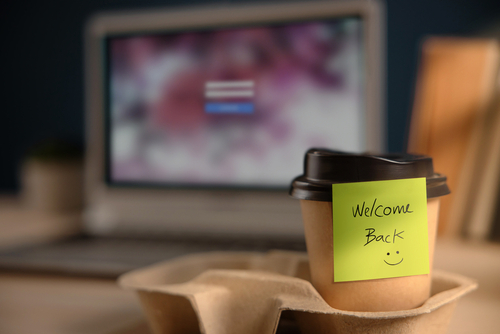After a year and a half of a widespread shift to remote work triggered by efforts to slow the spread of the COVID-19 virus, companies began bringing their team members back to work in earnest around March of 2022. Buoyed by the growing availability of the various COVID-19 vaccines and subject to testing, masking and social distancing requirements, major employers like Google, Twitter and Citigroup began plans to bring staff back on site. Despite some hiccups with the Omicron variant, dozens of top employers and countless smaller ones have now either ended remote work entirely or shifted to a hybrid model.
In an article for BBC Worklife, Meredith Turits discusses several general trends that can be seen among many organizations that have brought staff back to the office.
Trends in Return to Work
For one, there’s a clear divergence in employer versus employee eagerness to return to the office. “As much as Covid-19 infection waves have stymied the return-to-office, there’s another reason a widespread return has been a struggle: neither the workers who are enjoying remote work or the employers who want staff in seats are willing to back down,” writes Turits. “The battle is front and centre [sic] at many companies—it isn’t just happening at places like tech firms (such as Apple, where a high-profile tussle meant some top-ranking talent walked away in early May). It’s also shown up in less expected places, like the UK civil service, where workers who want to stay at home and the ministers who want them back are at odds in highly public ways.”
Not All Employees Want to Return—or Remain Remote
Certainly, some employees are anxious to get back into the office, but even these somewhat atypical workers are likely to be disappointed when they get back on site. “The office as workers know it has changed in many ways. In some cases, companies have reimagined their headquarters to better accommodate hybrid work, meaning employees are returning to unfamiliar offices,” says Turits. “However, even places that look the same as they did pre-pandemic don’t always feel the same. Some companies have switched to a hot-desking system, which means the personal spaces of the former office have gone away.”
Many companies around the globe are desperate to get back to business as usual and get staff back into the office; however, employees on average are far more reluctant. While some staff are eager to return to the pre-COVID office culture, there is growing tension between those who would rather continue working remotely and their employers.
Lin Grensing-Pophal is a Contributing Editor at HR Daily Advisor.
The post Lessons and Insights from the Return to the Office appeared first on HR Daily Advisor.
